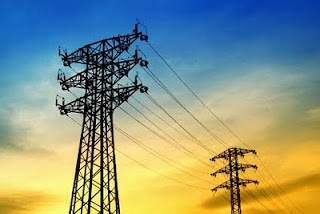 Power trading in India is a nascent industry and one with huge potential. Apart from Power Grid Corporation and PTC India which are public sector undertakings, there are private sector players ranging from the established Tata Power, JSW Energy and the new player Adani Group, also entering the market. Then there is the ‘alternative’ power generator like Suzlon, which is in the wind power generation business.
Power trading in India is a nascent industry and one with huge potential. Apart from Power Grid Corporation and PTC India which are public sector undertakings, there are private sector players ranging from the established Tata Power, JSW Energy and the new player Adani Group, also entering the market. Then there is the ‘alternative’ power generator like Suzlon, which is in the wind power generation business. These companies’ stocks are traded because balance sheets reflect the profits made on selling electricity to layusers but what about the actual commodity that they sell? What’s the market for energy trading like? PTC India has already been selling surplus power to Bhutan and is looking to do business with Nepal as well soon, as transmission lines are being built and operationalised for the same.
But according to the power trading consultant Feedback Ventures’ website, the volume of exchanges in India that trade in power is low - at about 2.5% of the total energy generated. So, there are businesses - like the above-mentioned website – who are stepping into the breach and helping some big names setup trading desks and also put together a business plan and structure a transaction system into place.
Power Exchange India Ltd lets you list with them as a member to start trading on the NSE and the National Commodities & Derivatives Exchange (NCDEX). Their membership list is not publicly available, so it is not clear how many institutional and retail investors are registered with them. Thought the site maintains watch by mentioning firms who are ‘inactive’ members.
Globally, all the environmentally-conscious economies are looking to tap and develop sources of power, that is about moving away from fossil fuels like coal and crude to cleaner power like wind, water, biomass and nuclear energy. Published sources state that in India, wind power is likely to hit 6,000 MW but it is below the actual target of 10,500 MW, that has been set by the Ministry of New and Renewable Energy for 2012.
 As of now, the only ‘energy’ that is being traded is carbon emissions and it is not something that most retail investors look to trade in or even understand. Since, the industry is a new one even globally, in India, even fewer people are in the business of carbon emission trading. In the US, despite the downturn, it is a $144 billion industry. So, saving on pollutant emitting carbon is making some firms rich despite what is actually happening to their economy at a macro level.
As of now, the only ‘energy’ that is being traded is carbon emissions and it is not something that most retail investors look to trade in or even understand. Since, the industry is a new one even globally, in India, even fewer people are in the business of carbon emission trading. In the US, despite the downturn, it is a $144 billion industry. So, saving on pollutant emitting carbon is making some firms rich despite what is actually happening to their economy at a macro level. So, just what is carbon emission trading? This is buying and selling of carbon credits. ‘Credits’ being literally awarded by how much a company has saved the environment from being polluted by its own factories or plants. There is a limit specified by a central authority for each firm/business, beyond which they cannot pollute and if it does so, it has to buy ‘credits’ from less polluting businesses, or countries as the case may be. So polluters pay a penalty while the good guys get rewarded. This is incentive at its best because it is money gained for being the good, cost effective and cleanly efficient business at work.
At the moment, even nuclear power which is at the centre of so much policy debate in India and the US, provides only 2.83% of power generation from 17 operational nuclear plants across the country. All of this is under-utilisation of the installed capacity to actually generate 1,45,588 MW of power. What really comes out is a meagre 4,120 MW. Nonetheless, India is looking to push this target even further - to 20,000 MW by 2020 at a cost of Rs 80,000 crore.
So, with figures like these, it’s easy to see that when this sector really gets going, an entire new roller coaster of a ride is in store for people, who invest in power futures or trade in energy, like they trade in other natural resources like gold and commodities, at the moment.
